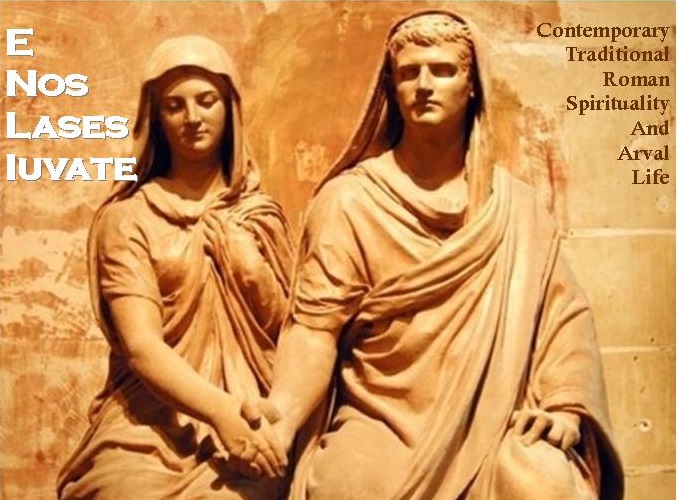We are currently in a period entirely devoted to Janus. I think it may be useful to make some reflection about the Arch as peculiar symbolic expression of the idea of "passage".
Janus represents, among other, the sacralization of the "passage" in a terms of space, time and initiation (the vessel). Related to Time, Janus is the sacralization of the moments of passage or "phase change" during natural cycles, in the human life, etc. Related to Space, the doors, the gates and all the sites materializing a passage have a sacred energy embodied in Janus. As for the time passages, the spatial passages represent a phase modification, a fracture and a discontinuity: the door, for example, divides and put in contact two spaces having different identities. In particular the door of the Temple (both architectural and natural) is a break-point between an "in" and an "out".
Passing through a door is a changing of status: this is particular relevant for a sacred place like a Temple but it is the same also for the house door.
I prefer not to discuss here about the meaning of the passage in initiation terms because it is a too long and complex issue to be properly analyzed here.
Therefore "passing through the door" is always a "dramatic" moment (in sacred sense): above all the passage through the "narrow gate" (observe the etruscan tombs or the ctonic sactuaries - palingenesis) and the bridges (structures unifying what Nature divided).
The Arch can be classified among those architectural structures with sacred and symbolic functions having a specific and peculiar meaning. Like other "passages", the arch presupposes a phase change, a continuity interruption, an "after-before" condition, a fracture in space and time. Unlike other types of passages, the Arch depicts a "purification passage", a purification from the extreme impurity. It is thus an essential tool to restore a purity status which has been somehow altered, a condition of order which has been violated, a restoring of Cosmos from Chaos.
The purifyng function of the Arch is extremely complex according to a symbolic point of view and it is very difficult to discuss briefly this topic for the presence of many related issues.
 The simplest and most visible example of this instrumental function is provided by the Triumphal Arch utilized in the military liturgies and processions. The soldiers, coming back from a military campaign contaminated by the Death, bloodshed and war, passed through the Arch to restore their "normal" status recomposing their spiritual integrity. The legionnaire, due to the bloodshed during the war, had left the "normal human order" and the passage thorugh the Arch gave the humanity back to the soldier.
The simplest and most visible example of this instrumental function is provided by the Triumphal Arch utilized in the military liturgies and processions. The soldiers, coming back from a military campaign contaminated by the Death, bloodshed and war, passed through the Arch to restore their "normal" status recomposing their spiritual integrity. The legionnaire, due to the bloodshed during the war, had left the "normal human order" and the passage thorugh the Arch gave the humanity back to the soldier.
Therefore, a triumph was not a military parade but a sacred rite whose main goal was the restoring of the Order the war and the bloodshed had altered.
 An architectural structure highly evidencing this purification function of the Arch is the Amphitheatre (i. e. the Coliseum). Here it is possible to find an apotheosis of the Arch having the goal to purify people after having attended a kind of shows which had as main focus the liturgy of the bloodshed.
An architectural structure highly evidencing this purification function of the Arch is the Amphitheatre (i. e. the Coliseum). Here it is possible to find an apotheosis of the Arch having the goal to purify people after having attended a kind of shows which had as main focus the liturgy of the bloodshed.
Similar considerations (the purification of the foreigners and the purification of "what is outside" the consacrated city space) could be made for the town gates.
 The ancient christian churches had an arch as entrance in the yard in the front of the church with the same function. The Roman Temple, not conceiving the idea of sin, had no purification arch rather having seven steps (representing the "rise": seven skies, seven planets, seven levels, etc.)
The ancient christian churches had an arch as entrance in the yard in the front of the church with the same function. The Roman Temple, not conceiving the idea of sin, had no purification arch rather having seven steps (representing the "rise": seven skies, seven planets, seven levels, etc.)
Passing through an arch hence is not a "neutral" operation: reflecting about this function means maintaining a status of active continuos awareness in order to achieve a constant sacred and oriented vision of our life.




